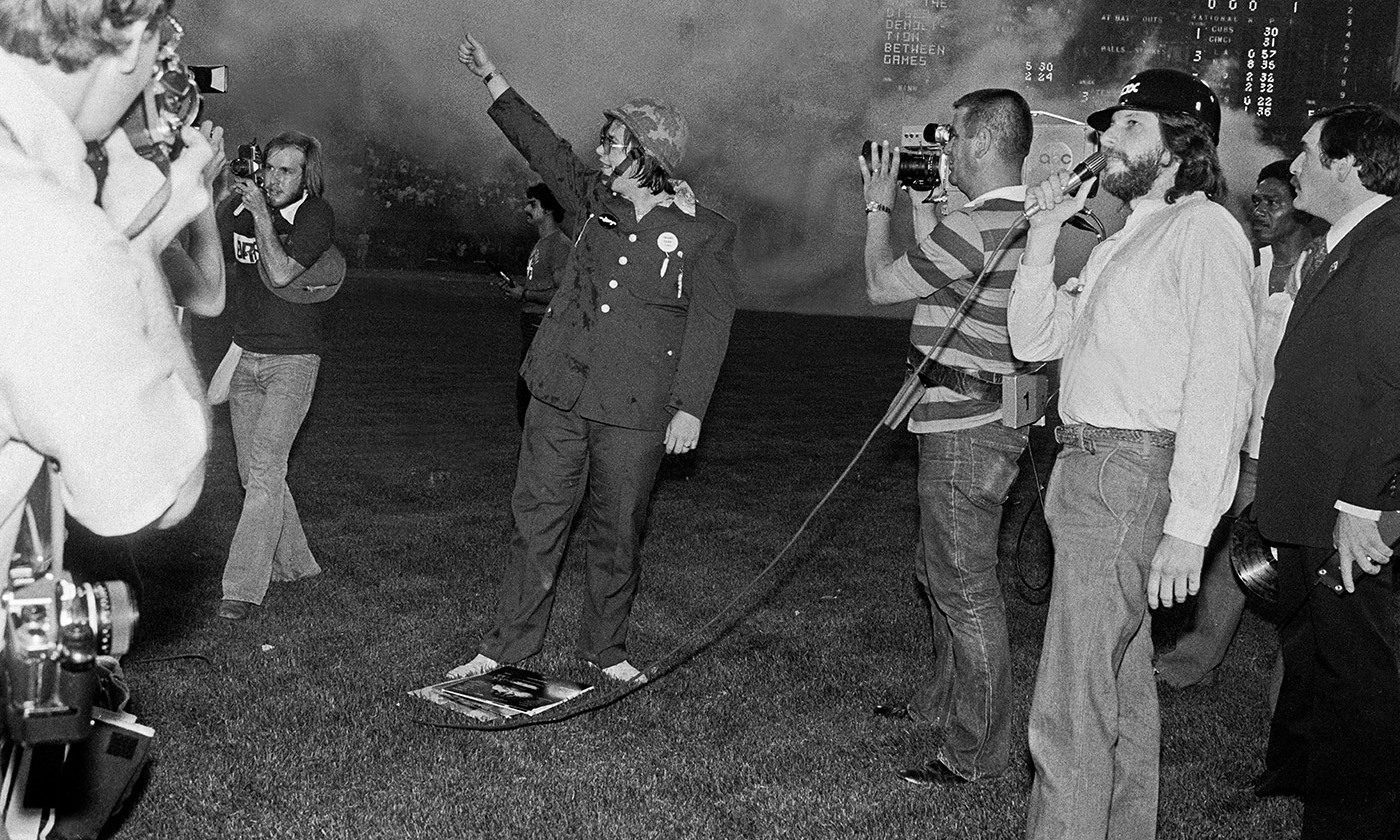Origin

Emerging during the early 1970s, disco is a genre of dance music compiled of R&B and funk roots. Influenced by urban and gay culture, disco had a large cultural impact on fashion, film, and other genres at the time . Representing freedom and liberation, disco provided it’s audience with an escape from the depressing political climate at the time. However, the emergence of disco also influenced the production and marketing of Black music, causing funk bands to shift their musical direction. In fact, as a result of advancements in musical technology, disco became more popular, leading competing funk bands to not only replace bass and horn players with synthesizers, but add disco rhythms to funk music. Nonetheless, disco was powerful due to its ability to provide all minorities – Blacks, Gays, Hispanics, etc- a taste of freedom after decades of marginalization.
Elements

- Four on the Floor Rhythm
- a drum style where the bass drum plays on all four beats of the 4/4 bar and an eighth note (quaver) or sixteenth note (semi-quaver) hi-hat pattern with an open hi-hat on the off-beat.
- Syncopated bass lines
- heavily prominent and syncopated, the bass line both drives the rhythm forward and supports the melody of the song. Essentially, the electric guitar was the “rhythm instrument”.
- Orchestral Instruments
- to strengthen and emphasize the melody, orchestral instruments such as the flute, harp, clarinet, trumpet, and violin are used.
- Fast Tempo
- Since disco is dance music, the fast tempo encourages listeners to move their bodies and dance.
Primary Performers

- Donna Summer
- Gaining prominence and popularity during the 1970s disco era, Donna Summer is known for hits such as “Last Dance“, “MacArthur Park”, and “Heaven Knows”. The “Queen of Disco”, Summer has sold over 230 million records worldwide and will go down in history as one of the worlds best selling artists of all time.
- Village People
- The quintessential disco group, Village People is a more commercialized side of disco music. Known for songs such as “YMCA“, “In the Navy”, and “Macho Man”, their unique character costumes symbolized homosexuality, freedom, and everything the disco era symbolized. Members include Victor Willis, Glenn Hughes, Felipe Rose, Alex Briley, Ray Simpson, Randy Jones, and David Hodo.
- Earth, Wind, and Fire
- Known for hits such as “Boogie Wonderland“, “September”, and “Let’s Groove” , EWF is one of the most innovative and commercially successful groups of all time. In fact, not only did they sell millions of records worldwide, they also changed and elevated the sound of black pop. Members include Philip Bailey, Verdine White, Ralph Johnson, David Whitworth, Myron Mckinley, etc.
- Gloria Gaynor
- Known for hits such as “I Will Survive“, “Never Can Say Goodbye”, and “Let me Know”, Gloria Gaynor is one of the most successful disco artists during the 1970s.
Summary

Almost as soon as it reached popularity, the disco movement fell victim to the drug epidemic, AIDs, and a strong anti-disco movement led by rock music fans and musicians. Ultimately causing backlash against both disco music and the disco lifestyle. In fact, in the late 1970s, “Disco-Demolitions” – events at which disco records were destroyed- rose to prominence amongst followers of the anti-disco movement. However, although it only occurred for a decade, disco had a lasting impact on dance and dance music culture. In addition, this impact can be seen most notably through partnered dancing, heightened emphasis on syncopated rhythm, and overall inclusion of all races, sexual orientations, and genders.

